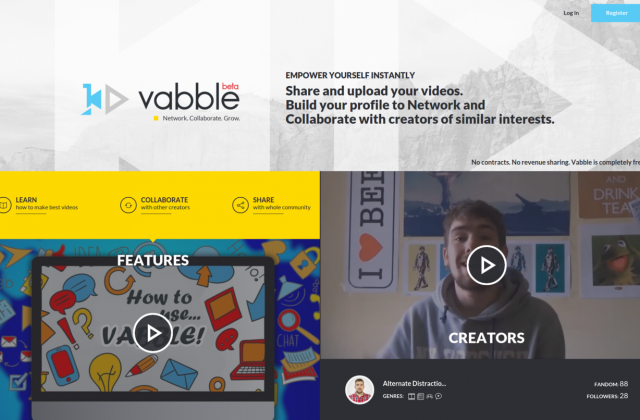This is worth checking out for anyone that’s missed it: a great and accessible overview (in the form of a guest post at Techcrunch) of seven key considerations for building a successful social product by someone who definitely knows a thing or two about it – Ning founder, Gina Bianchini.
Here are the seven points she discusses – though, it should be said, they sound a bit vague and general when taken out of context like this so it really is worth reading the original piece for yourself. Anyway she organises the main issues under the following headings:
1. Design your product to matter in a world of infinite supply
2. Be the best in the world at one thing
3. Seek out uniqueness
4. Focus on your most important interaction until you have it right
5. Choose your words carefully
6. Create a party, not a museum
7. Develop relationships, not features
Once I’d finished reading the original piece I decided to apply some of these points to concrete examples out there. Indeed when one thinks of the most successful social networks out there Bianchini is good at pointing out exactly how each of the above principles translates to these products (she uses Twitter and Facebook mainly), though it would be equally interesting to consider failed ventures from this perspective, for there are valuable lessons there too I think.
So, I got to thinking about something like Friends Reunited (which was one of the hottest properties in the social networking sector a few years ago when ITV bought it for $208 million in 2005, but since fell away and was sold last year for only $35 m) and Friendster (another formerly very successful SN, but now declining rapidly in traffic and only really enjoying success in Asia). N.B. I only chose these two to provide a couple of interesting examples for discussion – they are far from being the only ones to have experienced such fortunes.
In terms of Bianchini’s key principles therefore, how can we understand the failure of Friends Reunited and the current decline of Friendster (which doesn’t of course mean that it is finished for good as a SN, just that it is currently needing some re-direction)? The short answer in both cases is simple: Facebook. But this doesn’t really explain what happened, or why Facebook was able to succeed in taking users off both platforms so effectively.
Take the first point Bianchini raises – ‘design your product to matter in a world of infinite supply’. In essence this simply means being aware of the huge competition that exists out there for social network users’ time and attention. So, at a fundamental level, the decision to charge users something like $10/a year to use Friends Reunited was a huge mistake (albeit easy to see in hindsight). It ensured impressive profits early on, but by the time the network’s owners realised that it represented a disastrous long-term policy it was too late – Facebook was growing at an unstoppable rate, dwarfing Friends Reunited’s meagre increment of users.
Since critical mass is so key for social networks (i.e. it’s not just what you want to use – it’s what those you want to connect with already use), it’s now clear that the pricing policy was one key aspect by which Facebook was able to seize the initiative regarding network critical mass.
Bianchini also says ‘be the best in the world at one thing’ but if one looks at Friends Reunited, even now, there are multiple functions offered by the site (Friends Reunited Dating, Genes reunited etc) which seem to divide different facets of users’ experience in an unnecessary manner. Facebook doesn’t need a ‘family finder’ service for example – or a ‘dating service’ etc. The former is integrated into its normal operation, while the latter is to a point (you can do some things which dating websites also offer), but, importantly, neither is a key feature of Facebook marketing or brand image.
The problem with Friends Reunited in this respect is not that it does too many things – but that, in trying to attract users on the basis of all these services, it instead only confuses and sends a mixed message as to what it’s for. This is not the way to ‘be the best at one thing’. Diversification is of course a useful business strategy – but you must first lead in one particular field, before you can successfully diversify into others.
Turning now to Friendster briefly, the key change in dynamic undergone by this network recently is the focus on a specific part of the world (and language group) as an attempt to ‘be the best at one thing’, in the wake of decline in popularity in Western and English-speaking markets which began a few years ago. In response to this Friendster changed tactics, adding support for 10 new Asian languages between 2007 and 2009 and thus becoming the first network to support all major Asian languages.
This now represents their single greatest strength, around which other features are orientated (such as the focus on gaming for example). The point is that there is an attempt to create a core product identity around which a diverse range of other services can be built. Whether it will be enough to save it from the march of Facebook is another matter – at the moment it is certainly holding its own in the Asian market at least.
I could go on here – for example another of Bianchini’s points (‘create a party, not a museum’) relates to design strategy, highlighting the current preference for clean and unobtrusive design, which allows the actual content users are interested in (photos, messages, profile info etc) to be foregrounded. Again here, Friends Reunited seems to be making multiple errors from the fairly ‘busy’ interface (this was also a problem for Myspace as it lost ground to FB over the past 2 or 3 years) to the choice of colour scheme (blue, as Bianchini highlights, is pretty much ‘played out’ – i.e. Facebook – so why use it as the single defining colour in the case of FR?).
Anyway, all this isn’t designed to rip apart the efforts of a company that once represented one of the most successful social networks in the UK (and indeed also Australia and New Zealand), and did much to develop excellent technologies and products. Instead, I hope the discussion illuminates something of why certain networks seem to gain the upper hand over others – and consequently why Freinds Reunited’s initial success wasn’t as permanent as its owners would have liked.
The ultimate point is that of course the social networking market is always subject to external influences (like every other market): in this case things like technological changes can dictate the direction of development for a SN (advent of smartphones for example), or political factors can influence market dynamics (censorship in China means that companies must make an ethical decision about whether to operate there) to give a couple of examples. While this is often clearly out of the hands of developers, the key points discussed by Bianchini are certainly not – and it is that that makes them worthy of attention.



